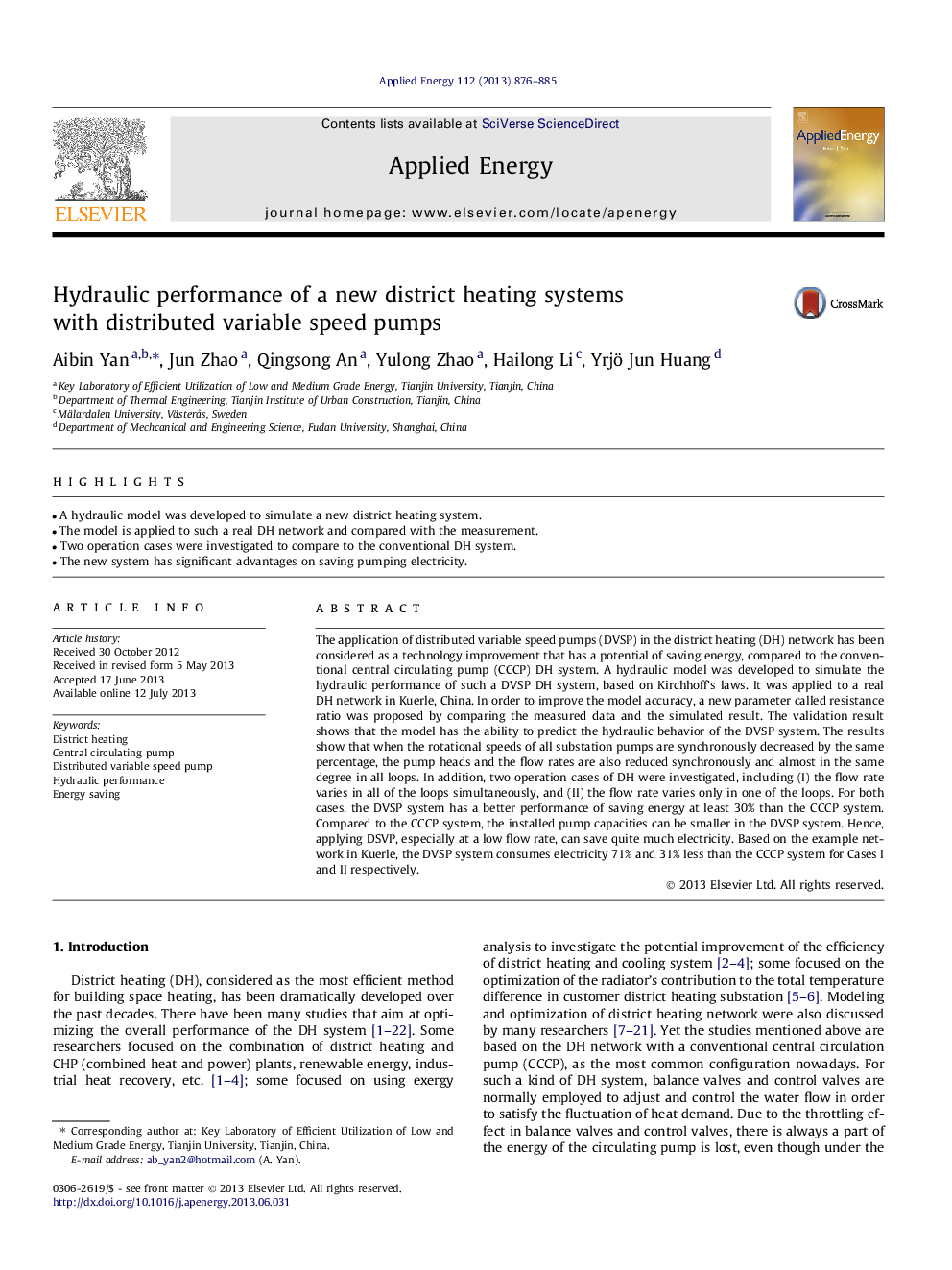| کد مقاله | کد نشریه | سال انتشار | مقاله انگلیسی | نسخه تمام متن |
|---|---|---|---|---|
| 242967 | 501913 | 2013 | 10 صفحه PDF | دانلود رایگان |

• A hydraulic model was developed to simulate a new district heating system.
• The model is applied to such a real DH network and compared with the measurement.
• Two operation cases were investigated to compare to the conventional DH system.
• The new system has significant advantages on saving pumping electricity.
The application of distributed variable speed pumps (DVSP) in the district heating (DH) network has been considered as a technology improvement that has a potential of saving energy, compared to the conventional central circulating pump (CCCP) DH system. A hydraulic model was developed to simulate the hydraulic performance of such a DVSP DH system, based on Kirchhoff’s laws. It was applied to a real DH network in Kuerle, China. In order to improve the model accuracy, a new parameter called resistance ratio was proposed by comparing the measured data and the simulated result. The validation result shows that the model has the ability to predict the hydraulic behavior of the DVSP system. The results show that when the rotational speeds of all substation pumps are synchronously decreased by the same percentage, the pump heads and the flow rates are also reduced synchronously and almost in the same degree in all loops. In addition, two operation cases of DH were investigated, including (I) the flow rate varies in all of the loops simultaneously, and (II) the flow rate varies only in one of the loops. For both cases, the DVSP system has a better performance of saving energy at least 30% than the CCCP system. Compared to the CCCP system, the installed pump capacities can be smaller in the DVSP system. Hence, applying DSVP, especially at a low flow rate, can save quite much electricity. Based on the example network in Kuerle, the DVSP system consumes electricity 71% and 31% less than the CCCP system for Cases I and II respectively.
Journal: Applied Energy - Volume 112, December 2013, Pages 876–885